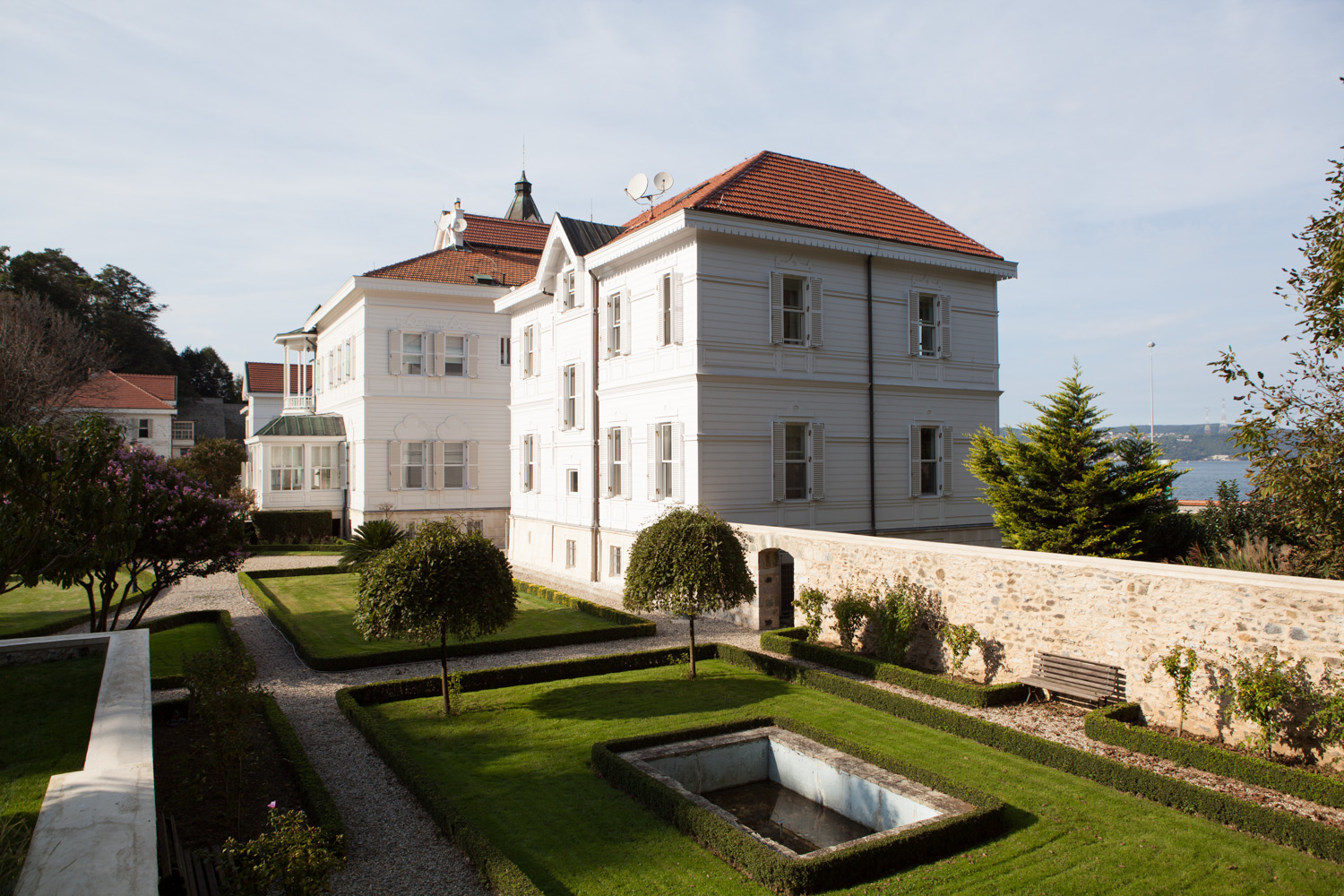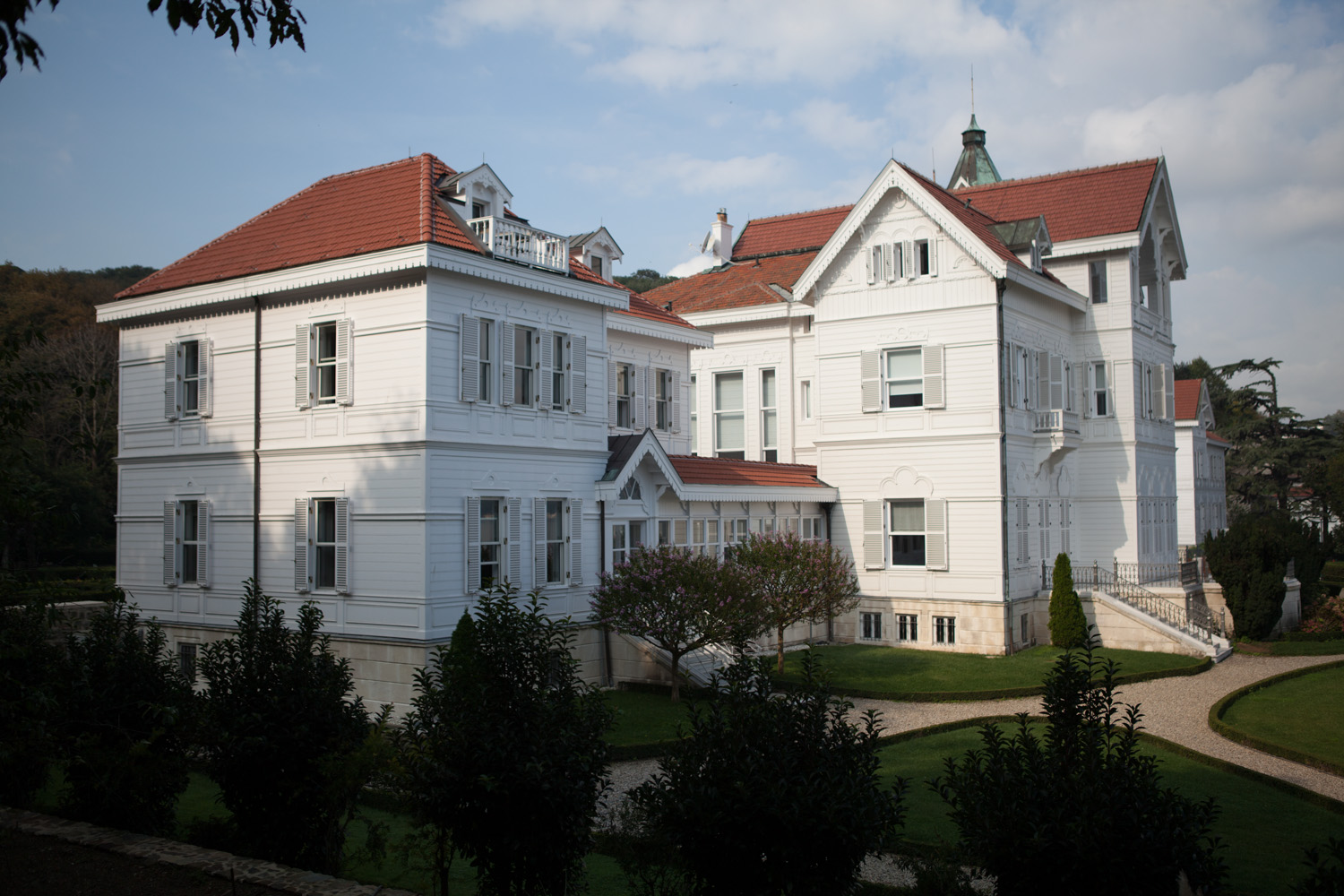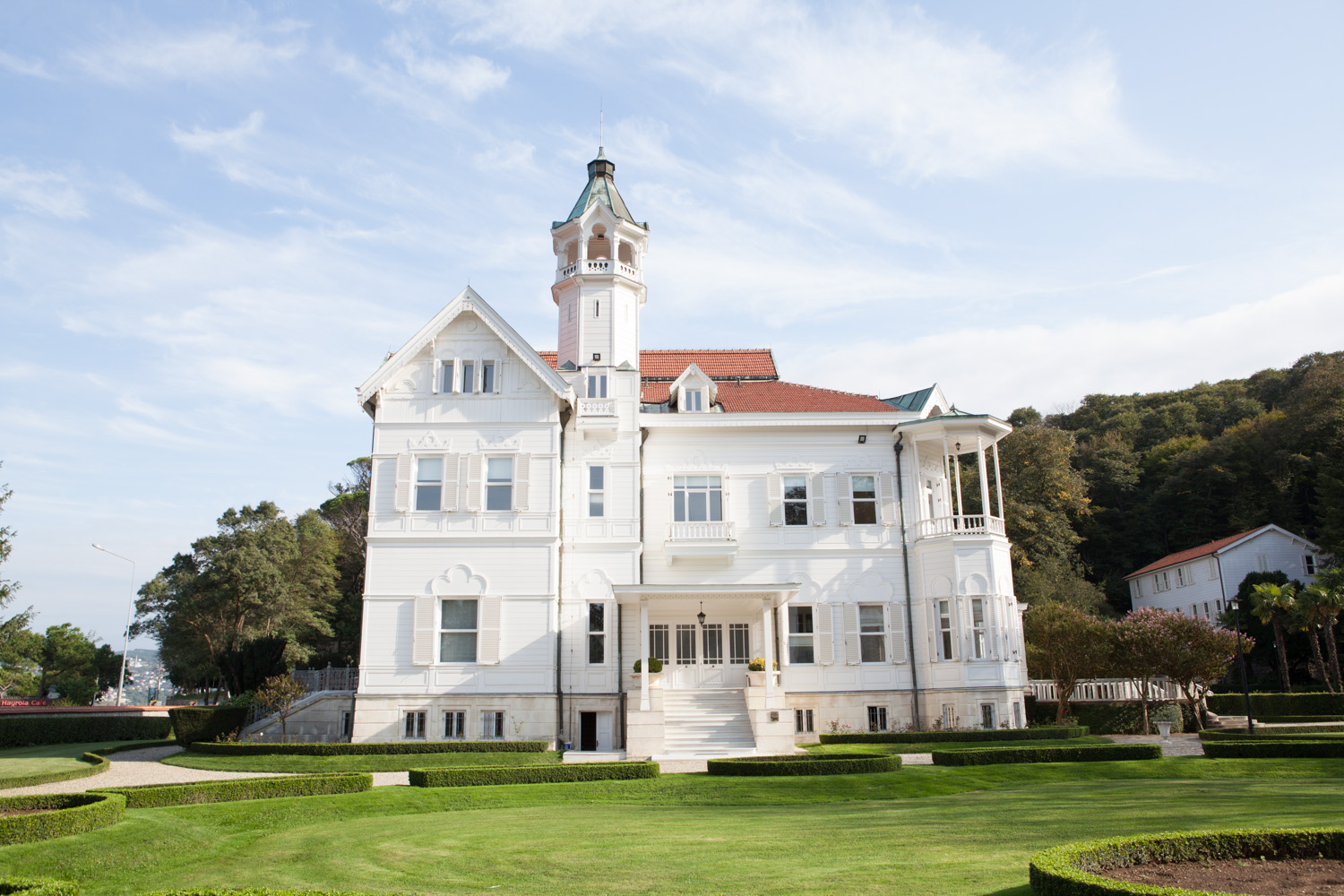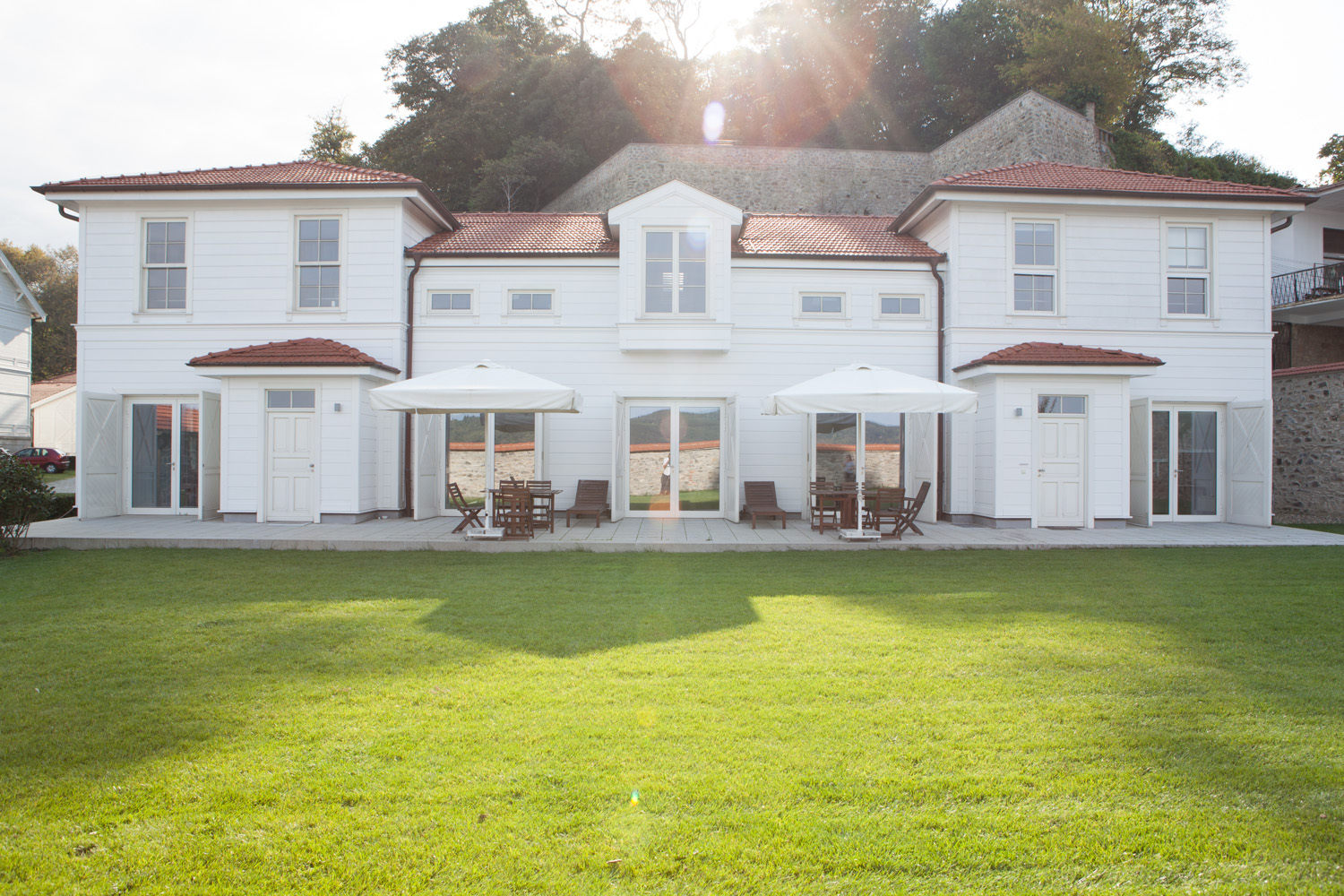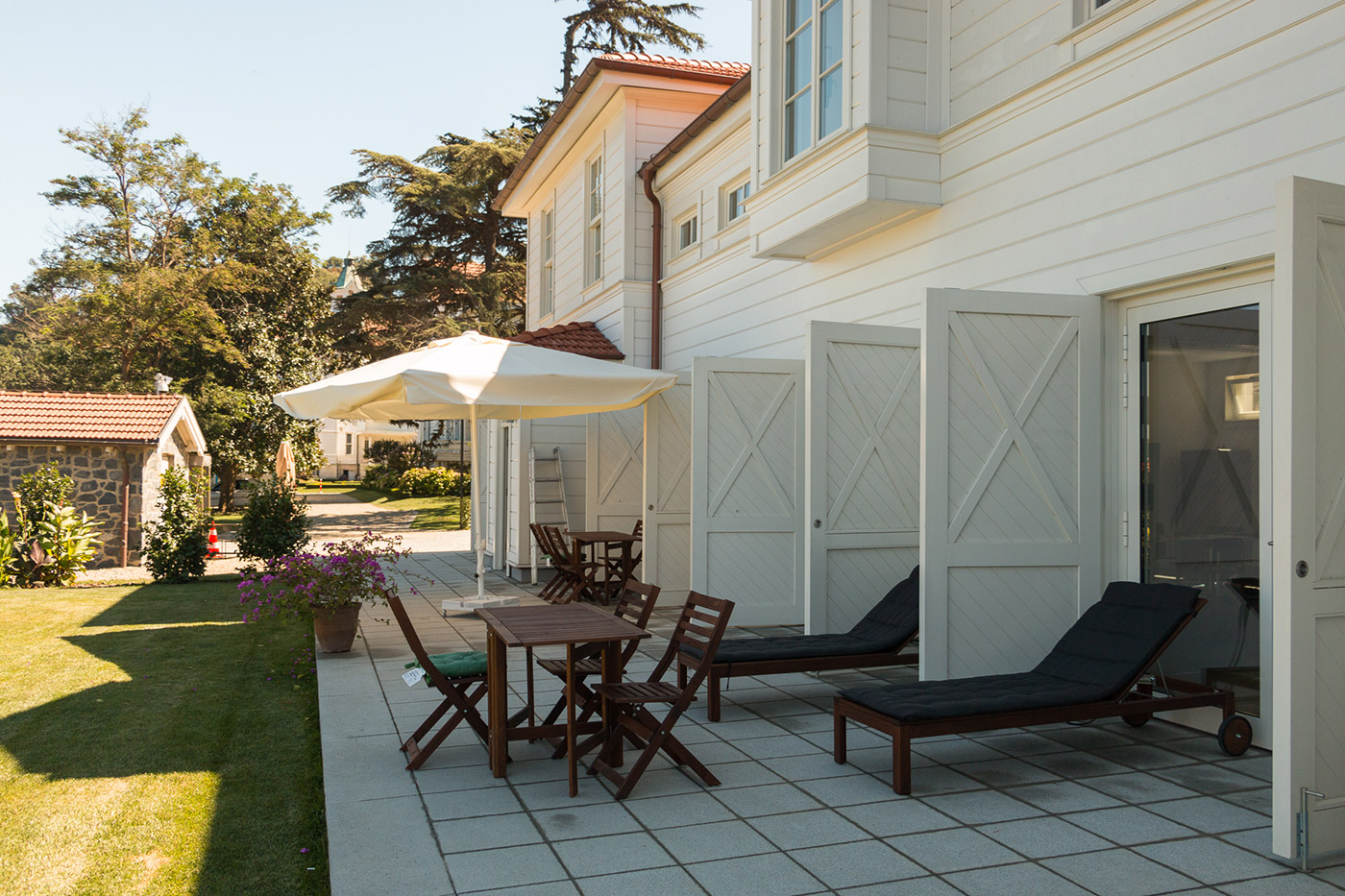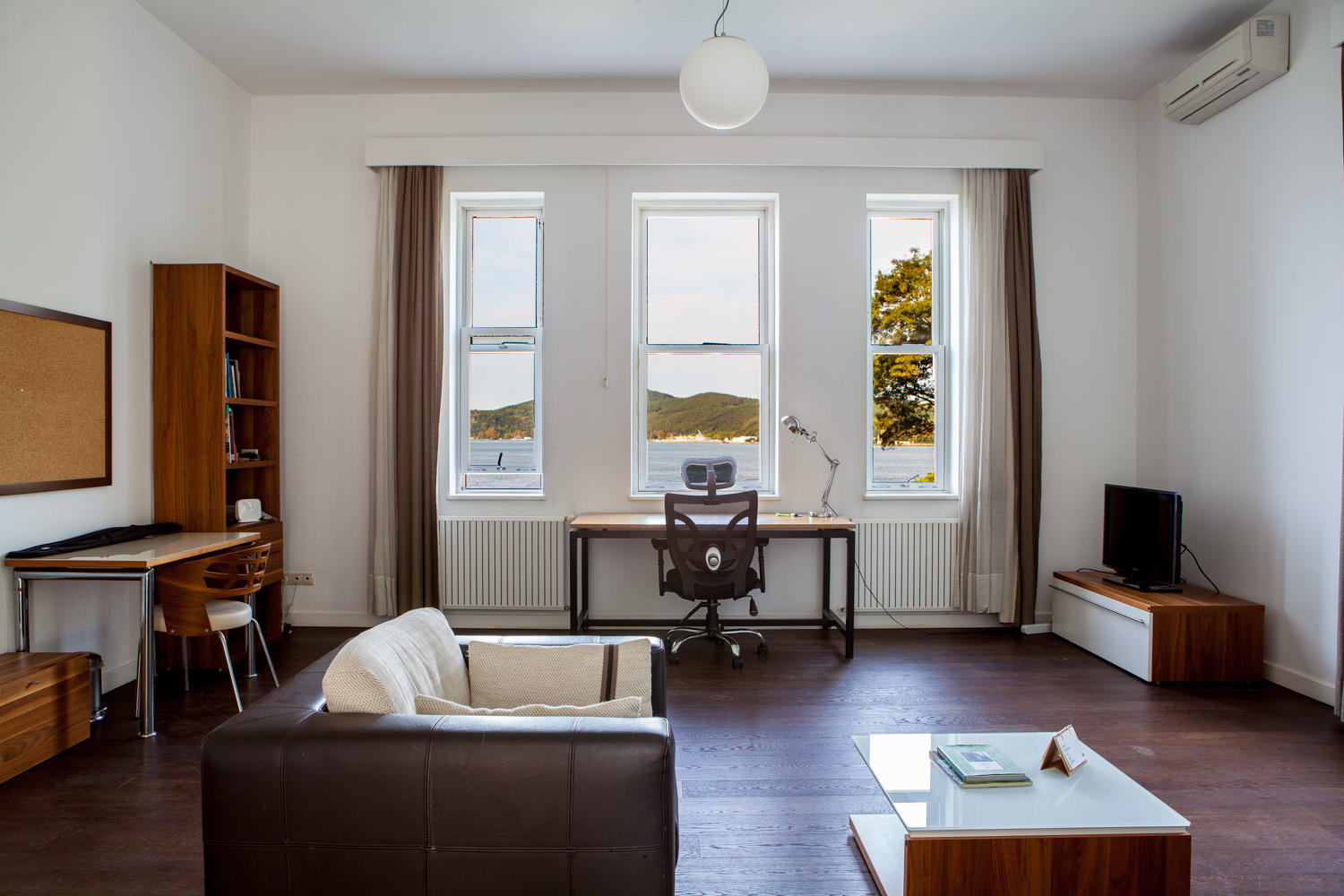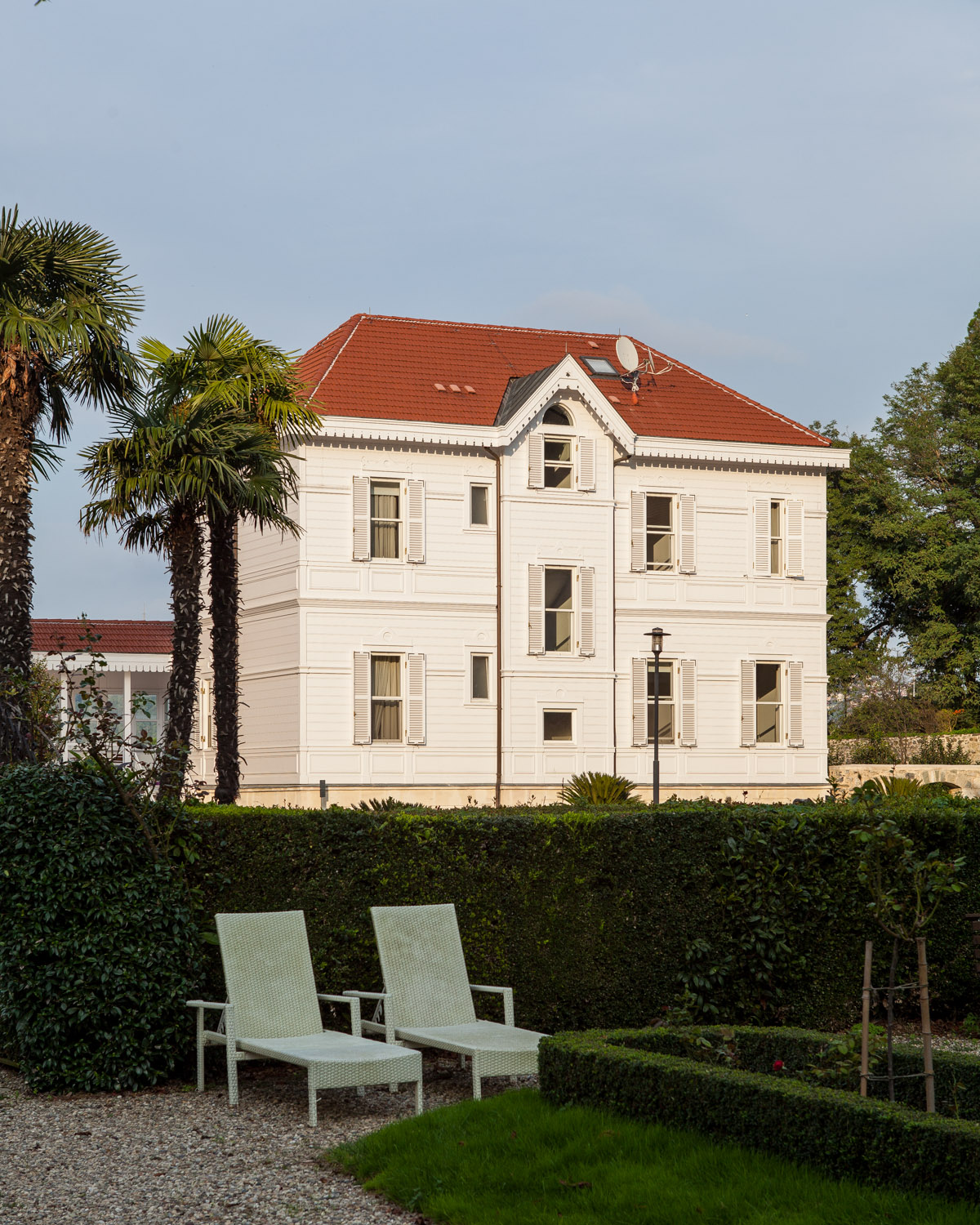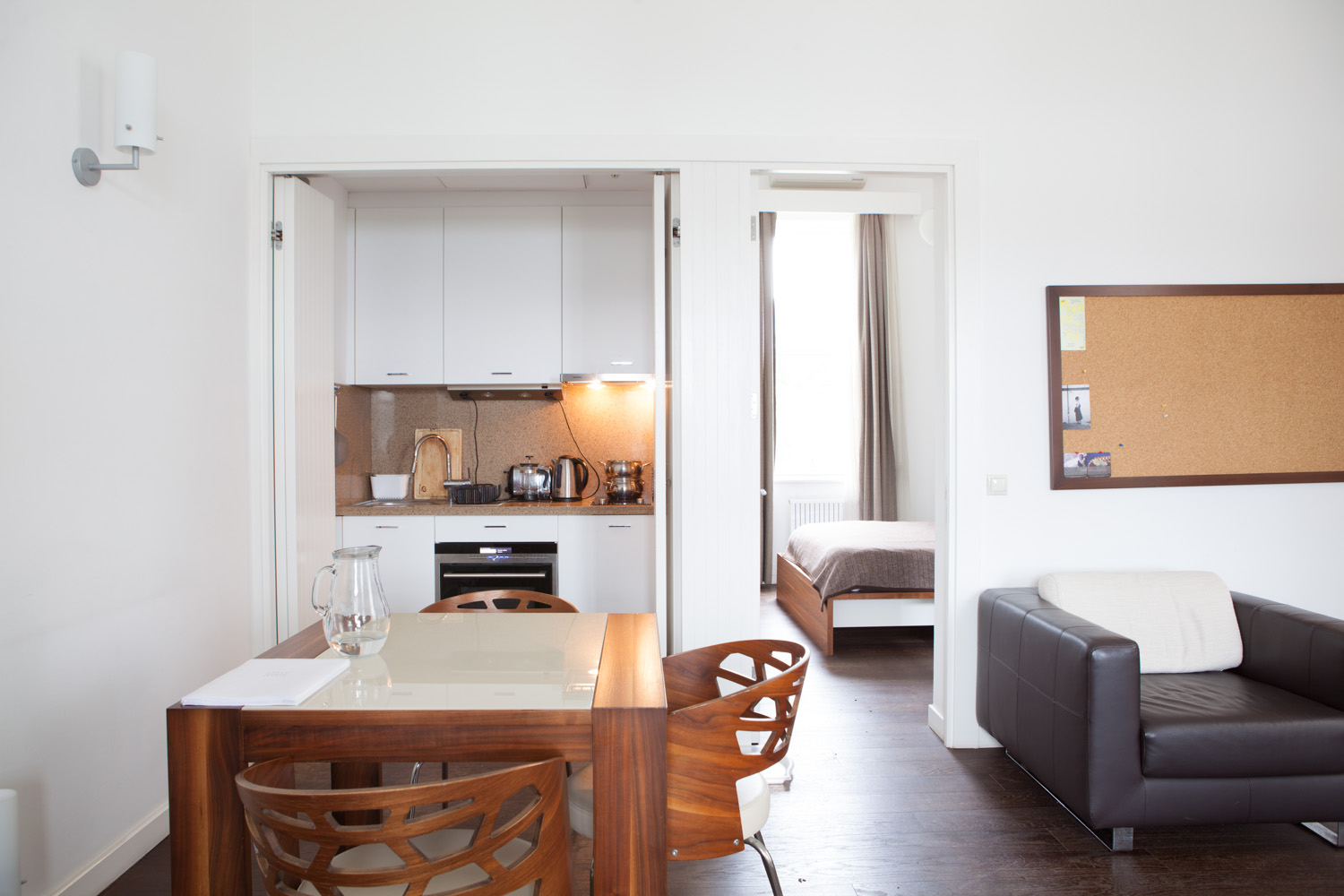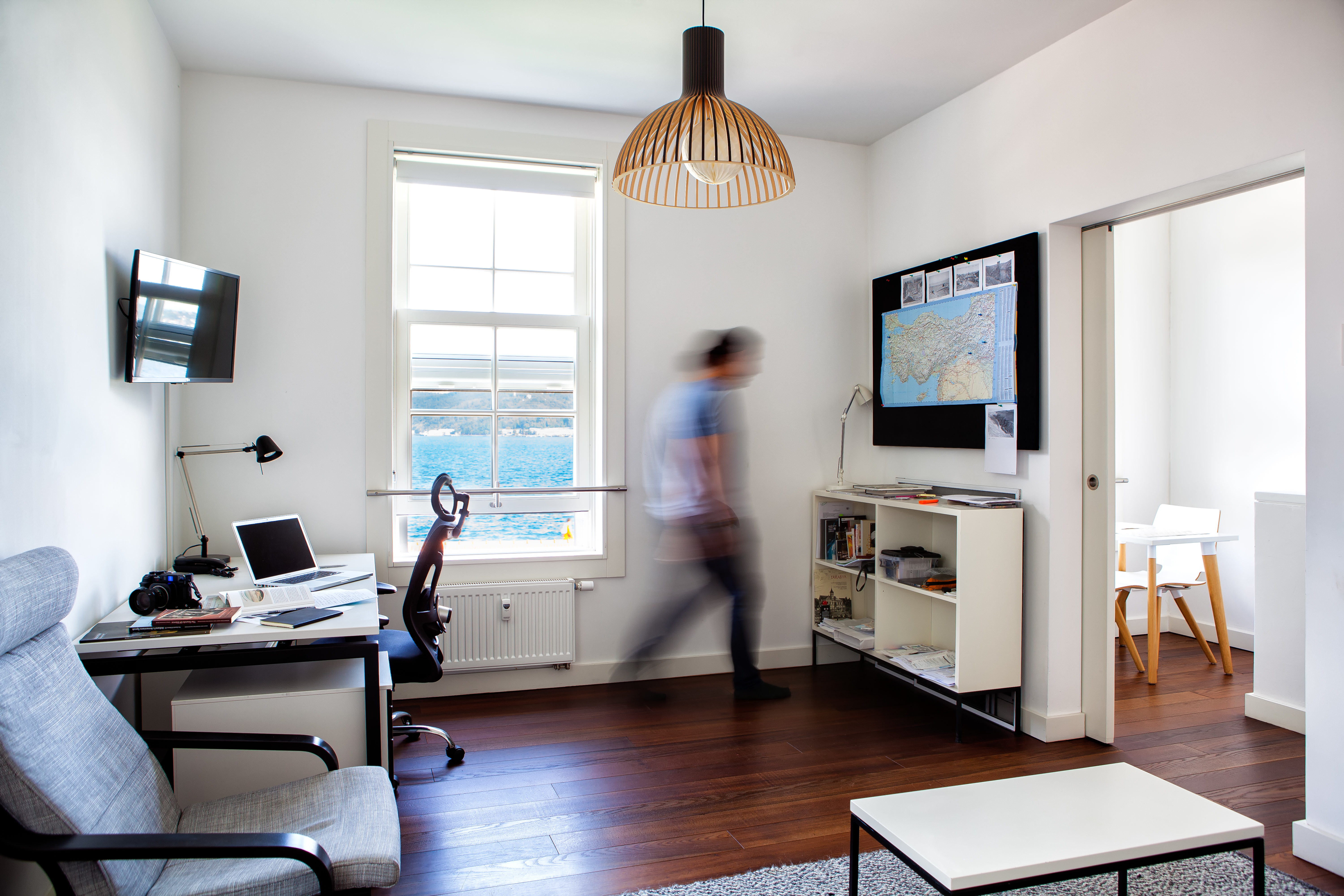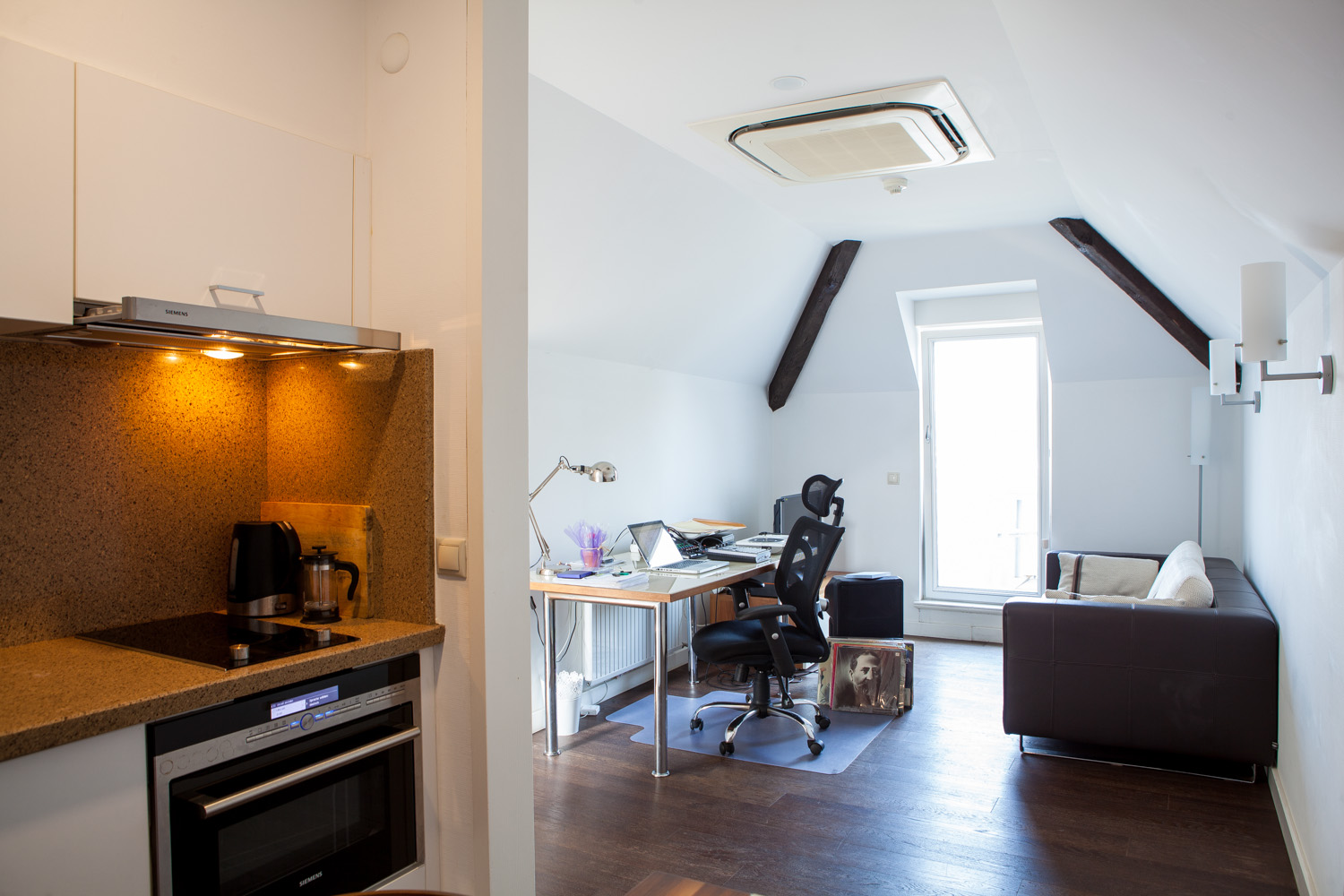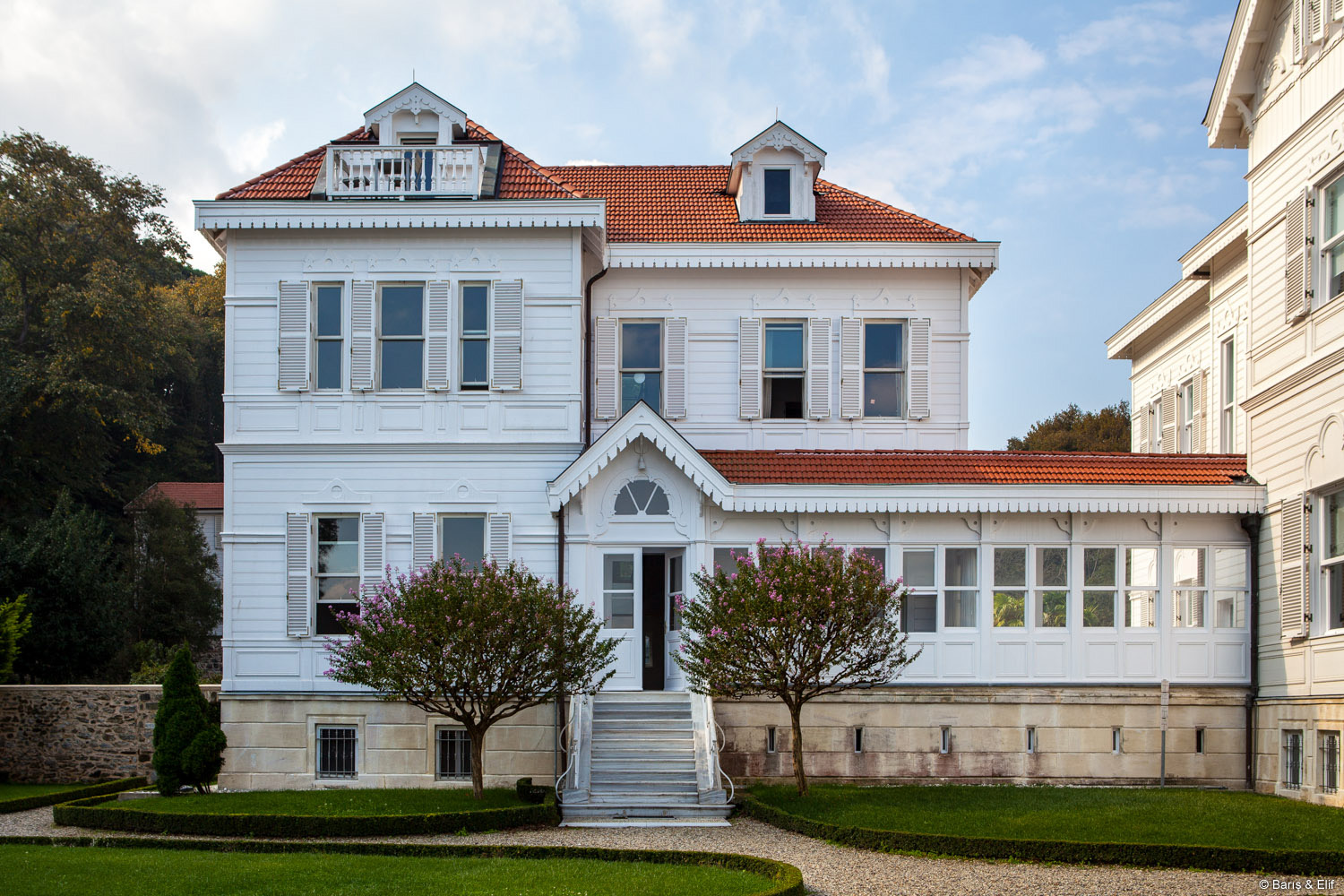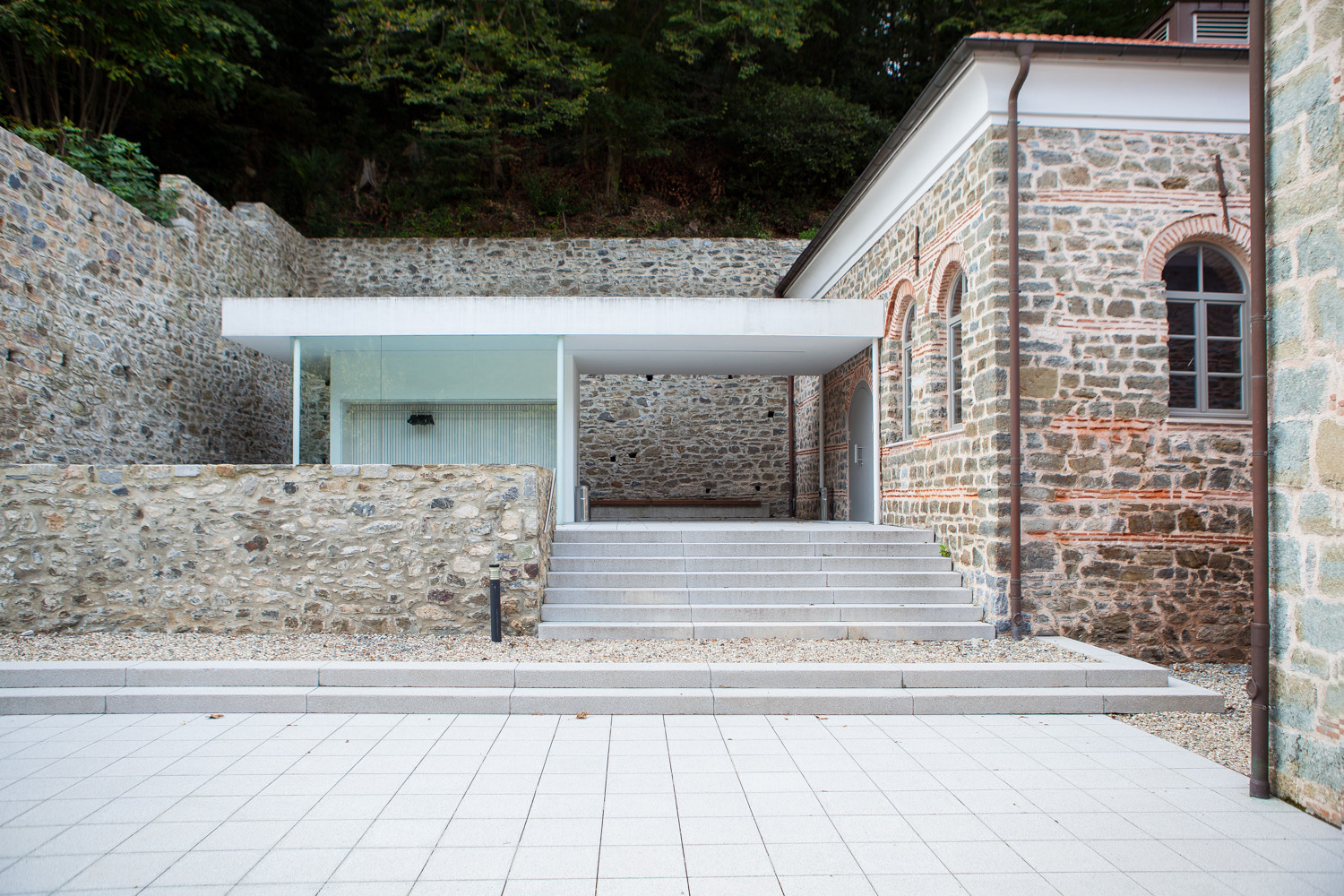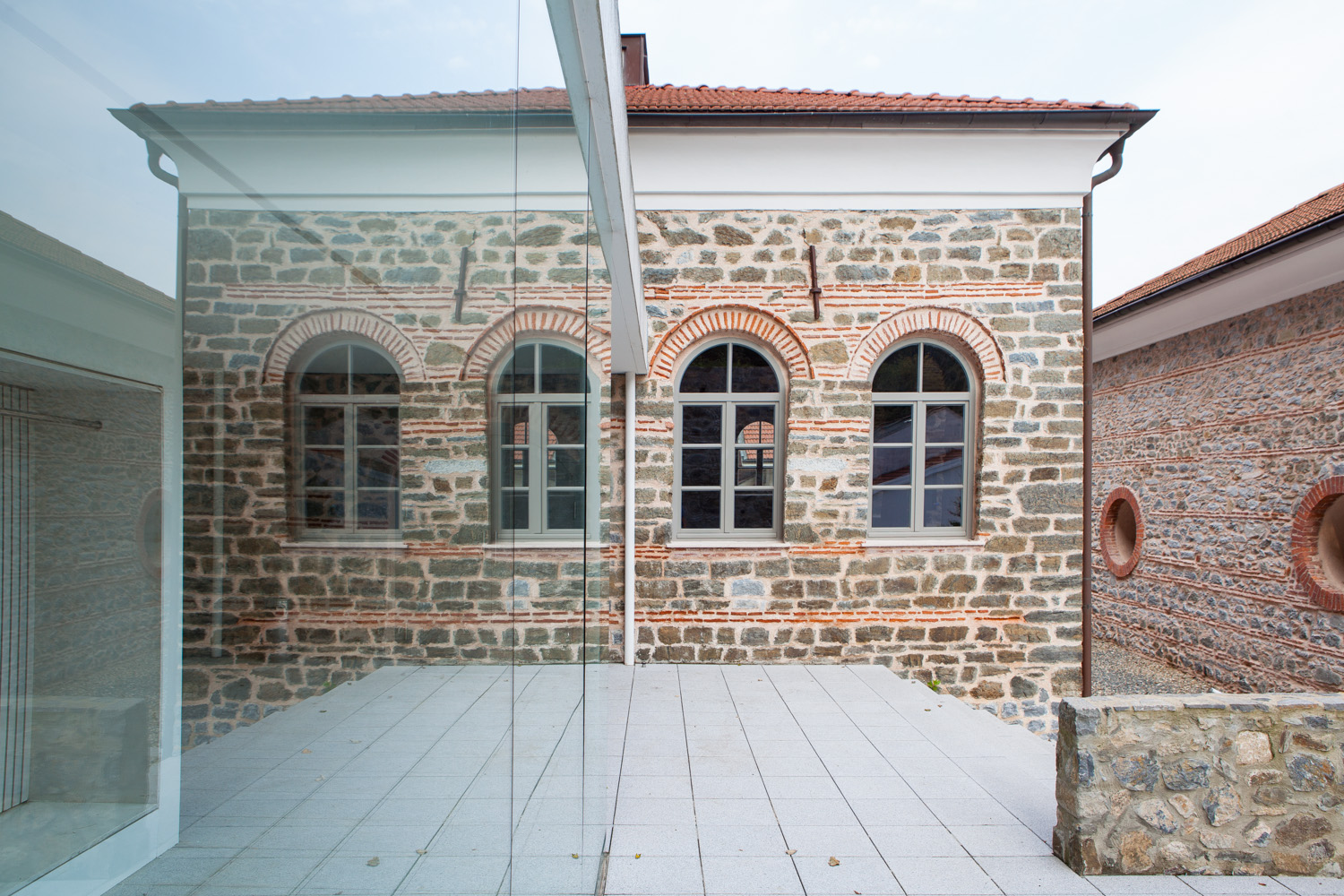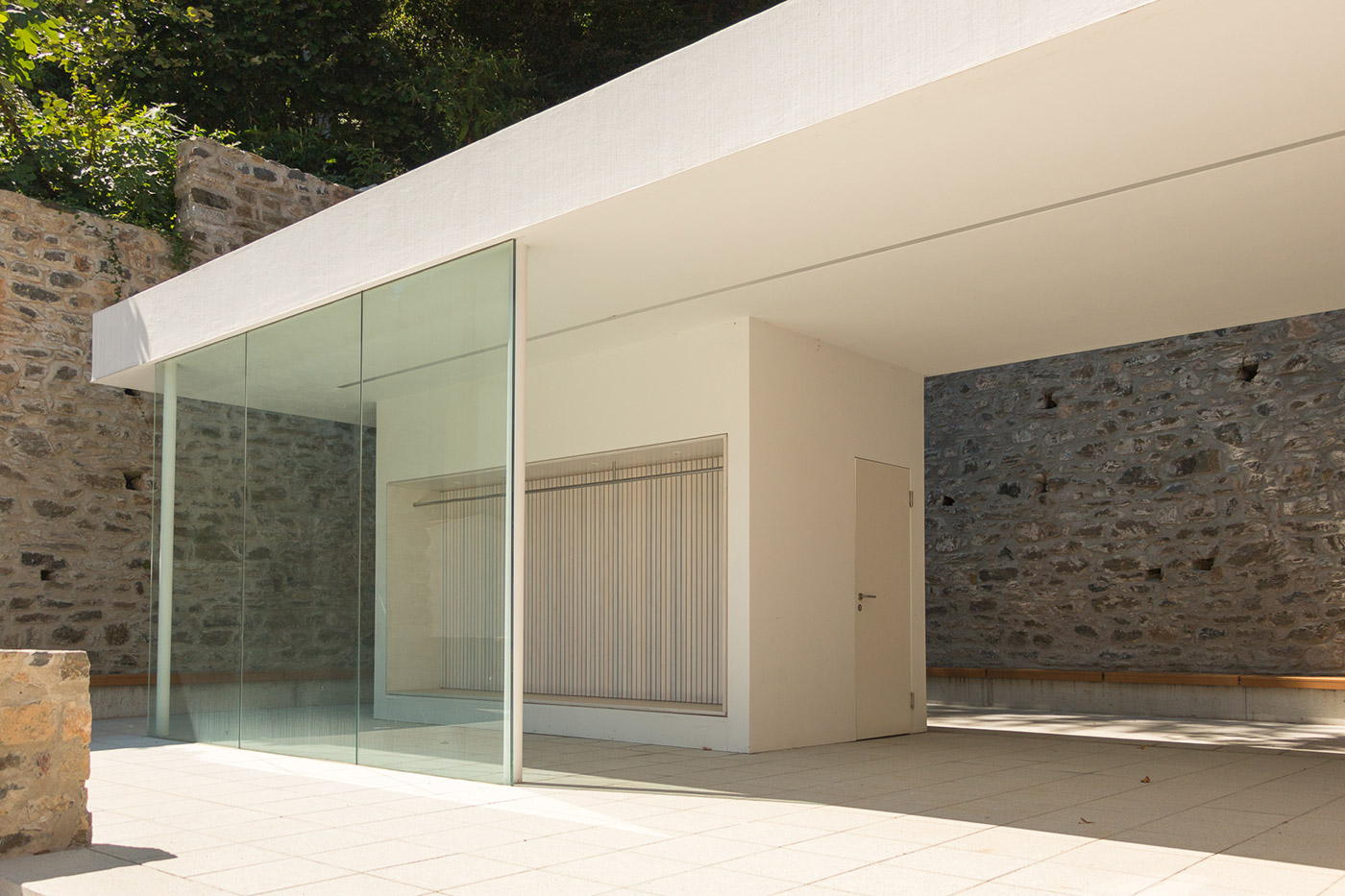The historic summer residence of the German ambassador is located in the former spa town of Tarabya, now part of the metropolis of Istanbul. The property was a gift from the Ottoman Sultan Abdul Hamid II (1842-1918). In 1880 he gave it to the German Empire for diplomatic use. The property therefore still has the status of an embassy grounds to this day. The residence covers an area of around 18 hectares. Much of it is an extensive forest and garden. In the front part there are ten buildings, mainly in the style of Turkish summer houses (yali), and the German military cemetery. The Cultural Academy occupies the former embassy chancellery, where there are five artist apartments. Two more artist apartments and studios were built in the former coach house. There is also an event room in the former canteen kitchen.
According to an Argonaut legend, Tarabya was originally called “Pharmacia” or “Phamakeia” (ancient Greek for poison). Nobody wanted to live in a place with such a name: “Phamakeia” was therefore renamed “Therapia” (recovery). Until the 16th century Tarabya was a fishing village. Sultan Selim II (1524-1574) later had a country house (köşk) built there with an impressive garden. Tarabya developed into a resort for upscale Istanbul society and several ambassadors built their summer houses there. In 1885 the Reichstag in Berlin approved the construction project for a summer residence in Tarabya. The sale of the site of the former Prussian embassy in Istanbul made funds available to begin construction. The first blueprints were made in 1882 by an architect named Cingria and revised by Wilhelm Dörpfeld, who worked in Athens. He paid particular attention to the inclusion of Ottoman building traditions: octagonal shapes in the ambassador’s house and the wooden columns he introduced are characteristic elements of Turkish summer houses. The building work was carried out by Armin Wegner. Construction began in 1885 and was completed two years later.
The extensive gardens of the residence extend over a large part of the grounds. You can recognize different complementary design phases. Today’s garden includes components of the complex from the Ottoman era as well as elements from the 1980s. The German military cemetery on the grounds is looked after by the German War Graves Commission. Its terrace-like design and the main sculpture are the work of the sculptor Georg Kolbe. The cemetery initially served as a resting place for the German soldiers who died in the Battle of the Dardanelles in 1915. Later those killed in both world wars from all over Turkey were reburied there. Every year, officials and representatives of German organizations commemorate the dead on the Day of National Mourning.
When the German embassy moved to Ankara after the establishment of the Turkish Republic in 1923, the house and the grounds lost their original purpose. The former embassy was designated the “Historic Summer Residence” and is now used by both the Ankara Embassy and the Consulate General in Istanbul as a place for German-Turkish dialogue: conferences, events and receptions take place in the ambassador’s former house, while the neighboring former embassy chancellery houses the residents of the Cultural Academy. The German-Turkish Chamber of Commerce and Industry is located in the former embassy counselor’s house.
